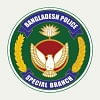Did police do enough to quell the New Market clashes?

Nahid and Doly had been in love. Six months earlier, they tied the knot in the hope of living happily ever after. But it was not meant to be. On the morning of April 19, 2022, 19-year-old Nahid Mia, who used to work in a computer shop as a deliveryman, left his home in Kamrangirchar of Old Dhaka for office. He never returned. He became a collateral damage in the bloodbath unleashed during the repeated clashes between Dhaka College students and shop owners and traders of the New Market area since Monday night. Nahid, who just happened to be at the wrong place at the wrong time, was brutally beaten to death; there were injury marks all over his body.
Twenty-seven-year-old shop staff Morsalin was met with the same fate, as he succumbed to his injuries while undergoing treatment at Dhaka Medical College Hospital (DMCH) on April 21. The father of two and sole breadwinner of the family, sustained critical injury to his head—with a brick—when he was standing in front of Nurjahan Market during the Tuesday clashes.
What started off as an altercation between some students of Dhaka College and two food shop owners of New Market over argument relating to sitting arrangements between two fast-food shop assistants on the evening of April 18, soon turned into a full-blown violent conflict. On April 19, the New Market area essentially turned into a warzone, with both parties engaging in attacks and counter-attacks. At one point, the Dhaka College students set fire to some of the shops, burning down five.
Journalists and pedestrians also came under attacks as the two parties continued their mad mayhem throughout the day on Tuesday. According to media reports, at least 12 journalists, including a photojournalist of The Daily Star, were injured, as both the Dhaka College students and the traders swooped in on them, accusing them of siding with the other party in their coverage. Some of them had to be admitted to hospitals for treatment.
Three pedestrians were critically injured in the violence. Nahid Mia and Morsalin were among them.
While the violence that has taken place is not surprising—especially in the New Market area—given the frequent conflicts and skirmishes between students of various public educational institutes the area witnesses, including Dhaka University, what is shocking is the dubious role played by the police in handling the situation.
The half kilometre stretch where the clashes took place between Nilkhet and Science Laboratory had police boxes at both ends. And although the area falls under the jurisdiction of the Ramna police division, the New Market police station was very close to the conflict site.
Despite this, why did it take the police two and half hours to reach the spot on the second day? By the time they arrived, many innocent people had sustained major injuries, and many shops had been gutted by the students. The delay in the arrival of the police and their inadequate immediate response have been questioned by many civil society members and observers.
Police justified their stance saying their involvement was strategic: they had apparently been trying to be neutral and had tried to negotiate with both parties to reach a peaceful resolution. The police also said, if they had gone to the site earlier, students positioned at the terrace of the 10-storey Dhaka College building would have pelted them with the bricks and stones.
There was a gap of about eight hours between the two phases of the conflict. What did the police do during those eight hours to prevent the second wave of bloodbath? Why did the police adopt a reactive strategy rather than a preventive one in the first place? The area is arguably still not secure, given that about 10 crude bombs exploded in the area even on Wednesday afternoon, as some of the market shop owners tried to resume their business.
There is another point that needs to be scrutinised here: both sides have raised allegation against the police for siding with the other party. While the students (some claiming to be activists and leaders of Bangladesh Chharta League) said that the police had opened fire on them, injuring five, the businessmen on the other hand, claimed that the police had been inactive initially and did nothing to stop the violent student attackers.
While police inaction in this case is apparent, what also needs to be looked at is why and how the students got involved in this feud. First of all, even if some of the students had been assaulted by the shopkeepers, why did they not go the police to seek legal recourse? The law enforcement agency could easily have intervened and apprehended the culprits.
In another version of the story, as reported in some local dailies, when the feud between the two fast food shop assistants over Iftar sitting arrangement had turned violent, one of the parties sought help from Dhaka College students to fight on his behalf. Even if that were the case, why did the educated, civilised students decide to take law into their own hands? As suggested in the media reports, many of the "students" who they spoke with identified themselves as BCL activists and leaders. And we are all well aware of the inherent aggression of these politically connected "students". Their appetite for violence—aided by the impunity they enjoy—has only increased over the last few decades, and have resulted in numerous unnecessary and avoidable conflicts and clashes, in which many have perished.
In this context, the Dhaka College authorities and the police, need to investigate what led to the students' involvement in the New Market incident, as well as what prompted the shop owners to take the law into their own hands.
As a society, we also need to find out the reasons behind the growing anger among the youth leading to such wanton violence: Is our education system and the society doing enough to meet the emotional and economic needs of our youth? Is it providing them with the guidance and mentorship they require? Is it espousing an increasingly violent culture of student politics?
According to businessmen centred around the New Market area, the closure of business at the peak of the biggest sale season of the year has cost them more than Tk 50 crore in sales loss. And the stagnant traffic on the adjacent roads since Monday night has not only caused immense sufferings to the commuters, but has also taken a toll on the economy by taking away from the productive hours of the workforce.
The overall reactive "strategy" of the law enforcement agency in quelling the situation needs to be scrutinised and the rationale behind it identified. The home ministry should take a hard look at the police response to the crisis and the allegations brought against them. At the same time, the guilty students and shop owners need to be identified and punished for their crimes, as per the law. Independent investigation bodies should be set up to look into these issues, from a neutral and solution-oriented perspective. These recent clashes have presented us with many complicated realities that we need to reflect upon in order to restore law and order in society.
Tasneem Tayeb is a columnist for The Daily Star. Her Twitter handle is @tasneem_tayeb

 For all latest news, follow The Daily Star's Google News channel.
For all latest news, follow The Daily Star's Google News channel. 








Comments